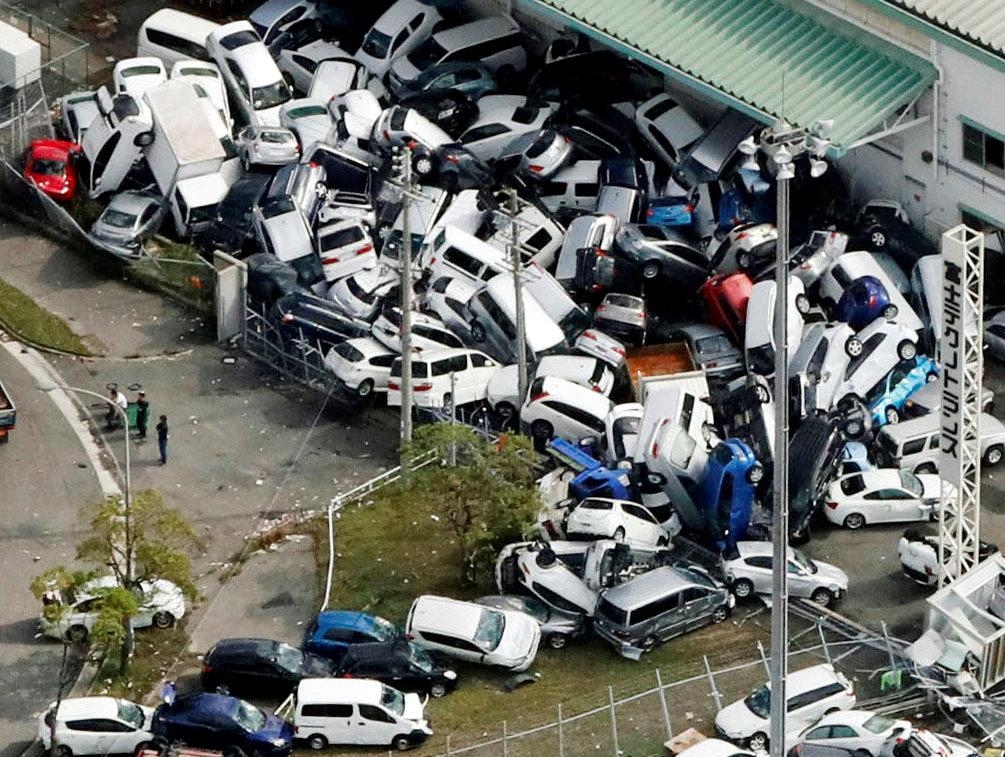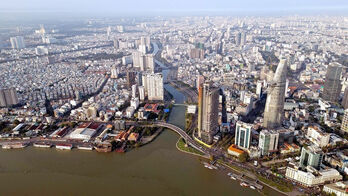
Vehicles damaged by Typhoon Jebi are seen in Kobe, western Japan, in this photo taken by Kyodo September 5, 2018. (Photo: Kyodo/via Reuters)
Typhoon Jebi, or "swallow" in Korean, was briefly a super typhoon and was the most powerful storm to hit Japan in 25 years. It came after months of heavy rain, landslides, floods and record-breaking heat that killed hundreds of people this summer.
About 3,000 tourists were stuck overnight at Kansai Airport in western Japan, an important hub for companies exporting semiconductors built on reclaimed land on a bay near Osaka and connected to the mainland by a bridge that was damaged when a tanker slammed into it during the storm.
But by afternoon many people had been rescued by bus or ferried by ship from the airport, where puddles still stood on the main runway after it was inundated on September 4.
Chief Cabinet Secretary Yoshihide Suga said on Wednesday afternoon about 470 people were injured. It was uncertain when the airport would reopen and some roads and train lines in the affected areas were still closed, he said.
But the number of households without power had been roughly halved to 530,000.
"The government will continue to do everything possible to tackle these issues with utmost urgency," Suga told a news conference earlier.
It could take several days to a week to reopen Kansai airport depending on the damage, the Yomiuri newspaper quoted an unidentified person in the airline industry as saying.
Winds that in many places gusted to the highest ever recorded in Japan, according to the Japanese Meteorological Agency, left a swathe of damage, with fruit and vegetables, many about to be harvested, hit especially hard.
Prime Minister Shinzo Abe posted updates on the rescue efforts at Kansai.
Jebi's course brought it close to parts of western Japan hit by rains and flooding in July that killed more than 200 people, but most of the damage this time appeared to be from the wind./.
NDO/Reuters
 Southeast Asia’s digital economy to top 300 billion USD by end 2025
Southeast Asia’s digital economy to top 300 billion USD by end 2025



